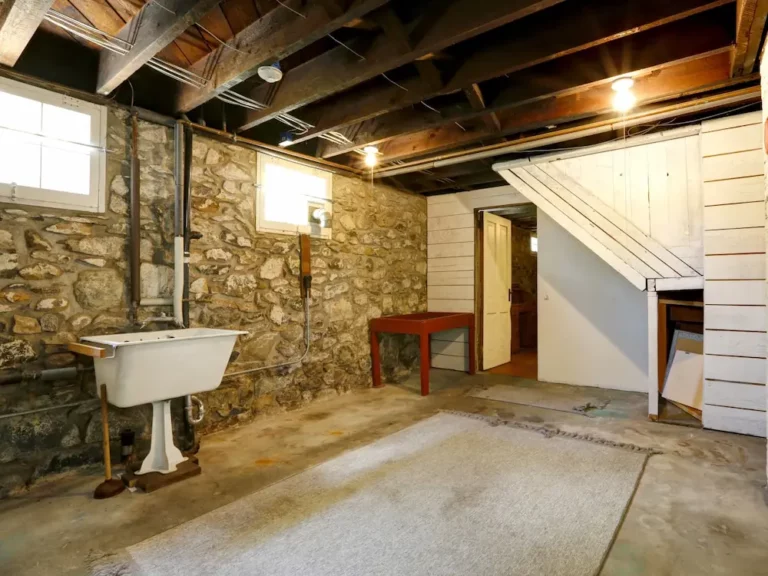How Long Does It Take a Refrigerator to Get Cold? Quick Guide to Refrigerator Cooling Time
When you purchase a refrigerator, one of the first things you want to know is how long it takes to get cold. After all, you want to start using it as soon as possible, and you don’t want to risk spoiling any food you put in it. The answer to this question isn’t straightforward, though, as it depends on several factors, such as the type and size of the fridge.
According to various sources, most refrigerators take between 3 to 24 hours to reach the ideal temperature. However, this can vary depending on the model and size of the fridge. For instance, mini-fridges can be ready in as little as 2 hours, while larger models can take up to 24 hours. Additionally, if you’re replacing an old refrigerator, it may take longer to cool down than a brand new one.
It’s important to note that while your refrigerator may feel cool to the touch after a few hours, it may not have reached the recommended temperature for storing food yet. The ideal temperature for a refrigerator is 40°F, and it’s recommended that you wait at least 12 hours before putting any food in it. By doing so, you can ensure that your food stays fresh and safe to eat.
Understanding Refrigeration
Refrigerators are one of the most essential appliances in our homes. They help us keep our food fresh and safe to eat for longer. But how do they work? In this section, I will explain the basics of refrigeration and what factors influence the cooling time of your fridge.
The Cooling Process
The cooling process in a refrigerator works by removing heat from the interior of the fridge and releasing it to the surrounding environment. This process is made possible by the use of a refrigerant, a substance that can absorb and release heat as it changes from a liquid to a gas and back again.
The refrigerant is compressed in the compressor, which raises its temperature and pressure. The hot, pressurized refrigerant then flows through the condenser coils on the back or bottom of the refrigerator, where it releases heat to the surrounding air. As the refrigerant cools, it condenses back into a liquid and flows through the expansion valve, where it expands and evaporates, absorbing heat from the interior of the fridge. The cold refrigerant then flows back to the compressor to repeat the cycle.
Factors Influencing Cooling Time
The time it takes for a refrigerator to cool down to its optimal temperature can vary depending on several factors, including:
- The size and type of the refrigerator: Full-size refrigerators typically take longer to cool down than mini fridges.
- The ambient temperature: If the room temperature is high, it will take longer for the refrigerator to cool down.
- The initial temperature of the food: If you put warm or hot food in the refrigerator, it will take longer to cool down.
- The amount of food in the refrigerator: A full refrigerator will take longer to cool down than an empty one.
- The frequency of door openings: Every time you open the door, warm air enters the fridge, which can increase the cooling time.
By understanding how refrigeration works and what factors influence cooling time, you can take steps to optimize the performance of your refrigerator and keep your food fresh and safe to eat.
Average Cooling Time
When it comes to cooling a refrigerator, the average time it takes for a full-size refrigerator to cool down to the recommended temperature of 40°F is 12 hours, according to Prudent Reviews. However, it’s important to note that cooling time can vary depending on the type and brand of the refrigerator.
Mini fridges, on the other hand, have a quicker cooling time, with an average of 4 hours. This is because they are smaller in size and have less space to cool down.
It’s also important to note that a new refrigerator usually takes as long as 24 hours to cool down to its full operating temperature, according to Refrigerator Planet. However, it’s safe to store food after 3-5 hours without worrying about spoiling. To ensure that the fridge is at a food-safe temperature, use a portable thermometer to check the internal temperature before putting your food back in.
Factors such as the room temperature, the initial temperature of the food, and the amount of food in the refrigerator can also affect the cooling time. It’s important to keep the refrigerator door closed as much as possible during the cooling process to help it cool down faster.
Overall, it’s important to be patient when waiting for a refrigerator to cool down. While it may take some time, it’s necessary to ensure that your food stays fresh and safe to eat.
Brand Variations
I have found that the cooling time of a refrigerator varies by brand and model. Some brands take longer to cool down than others. Here are some examples:
- GE: The manufacturer recommends giving its models up to 24 hours to get cold. However, some GE refrigerators can take as little as 2 hours to cool down.
- Samsung: Samsung refrigerators take about 12 hours to cool down to the recommended temperature of 40°F. However, some models may take up to 24 hours to cool down completely.
- Whirlpool: Whirlpool refrigerators take about 12 hours to cool down to the recommended temperature of 40°F. However, some models may take up to 24 hours to cool down completely.
- LG: LG refrigerators take about 12 hours to cool down to the recommended temperature of 40°F. However, some models may take up to 24 hours to cool down completely.
It’s important to note that the cooling time of a refrigerator can also be affected by factors such as the size of the refrigerator, the number of items inside, and the frequency of door openings.
If you’re unsure about how long it will take for your refrigerator to cool down, it’s always a good idea to consult the manufacturer’s instructions or contact their customer service department for advice.
Impact of Room Temperature
I’ve learned that the temperature of the room can have a significant impact on how long it takes for a refrigerator to get cold. According to Dave’s Appliance Service, the ideal temperature range for a refrigerator’s location is between 60ºF and 95ºF. If the room temperature is too high or too low, it can damage the compressor or sealed system, which can lead to longer cooling times and potential repairs.
If the room temperature is too high, the compressor will have to work harder to cool the refrigerator, which can increase the cooling time. On the other hand, if the room temperature is too low, the refrigerator may not be able to maintain a consistent temperature, which can also lead to longer cooling times.
It’s important to note that the temperature of the room can also impact the internal temperature variance of the refrigerator. According to EdgeStar, an internal temperature variance of several degrees can occur depending on how frequently the door has been opened/closed and the ambient temperature of the room.
To ensure that your refrigerator is cooling efficiently, it’s important to keep it in a room with a consistent temperature within the recommended range. If you live in an area with extreme temperatures, consider using a room with climate control or taking steps to insulate the room where the refrigerator is located.
Effect of Fridge Size
When it comes to how long it takes for a refrigerator to get cold, the size of the fridge plays a significant role. The larger the fridge, the longer it will take to cool down. This is because a larger fridge has more space to cool, and it takes more time for the cold air to circulate throughout the entire unit.
According to HandyManHowTo, a refrigerator typically takes between 4 and 24 hours to get cold, with an average of 12 hours. However, this cooling time can vary depending on the size of the fridge.
For example, a mini fridge may only take 4 hours to reach optimal temperature, while a full-sized fridge can take up to 12 hours or even longer. This is because a mini fridge has less space to cool, and the cold air can circulate more quickly throughout the unit.
If you have a larger fridge, it’s important to keep this in mind when stocking it with food and drinks. You’ll want to give the fridge enough time to cool down before adding any perishable items to ensure they stay fresh and safe to eat.
Overall, the size of the fridge is an important factor to consider when it comes to how long it takes to get cold. If you have a larger fridge, be patient and give it enough time to cool down properly.
Proper Usage for Optimal Cooling
When it comes to getting the most out of your refrigerator’s cooling capabilities, proper usage is key. Here are a few tips to ensure your fridge is working as efficiently as possible:
- Keep the fridge full: A full fridge helps maintain a consistent temperature. If you don’t have enough food to fill it, consider using water bottles or other items to take up space.
- Don’t overstuff the fridge: While a full fridge is good, an overstuffed fridge can actually hinder proper airflow and cooling. Make sure there is enough space for air to circulate.
- Avoid opening the fridge unnecessarily: Every time you open the fridge, cold air escapes and warm air enters. Try to limit the number of times you open the fridge and keep the door open for as short a time as possible.
- Check the temperature settings: Make sure your fridge is set to the recommended temperature of 40°F (4°C). If your fridge has a separate freezer, it should be set to 0°F (-18°C).
- Clean the coils: Dust and debris can accumulate on the coils at the back of your fridge, which can hinder proper cooling. Use a vacuum or brush to clean them regularly.
By following these simple tips, you can ensure that your fridge is working at its best and keeping your food fresh for as long as possible.
Conclusion
In conclusion, how long it takes for a refrigerator to get cold depends on several factors, including the model, size, and initial temperature. On average, a refrigerator takes around 12 hours to cool down to the recommended temperature of 40°F (4°C) for food safety.
However, this time can vary between 2-24 hours depending on the refrigerator model and size. For example, mini-fridges may take less time to cool down, with an average cooling time of 4 hours.
It’s important to note that putting warm or hot food in the refrigerator can also affect the cooling time. Therefore, it’s recommended to let the food cool down to room temperature before placing it in the fridge.
To speed up the cooling process, there are some tips that can be helpful. For example, placing a bowl of ice in the fridge can help lower the temperature faster. Additionally, keeping the fridge door closed as much as possible can also help maintain the temperature and speed up the cooling process.
Overall, it’s important to be patient when waiting for a new refrigerator to cool down. While it may be tempting to put food in right away, it’s best to wait until the recommended temperature is reached to ensure food safety and prevent spoilage.



